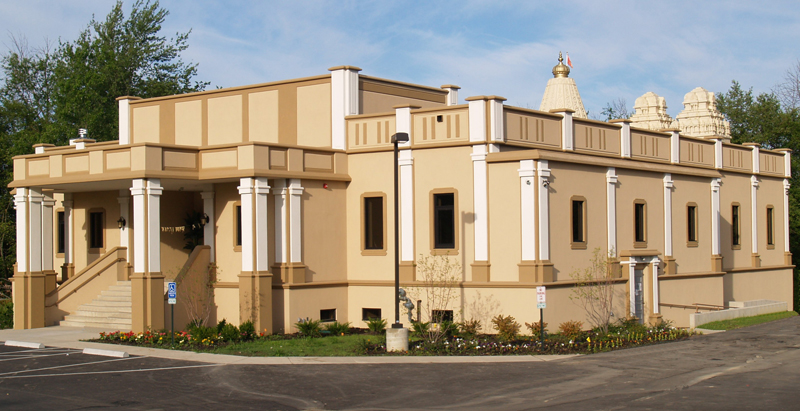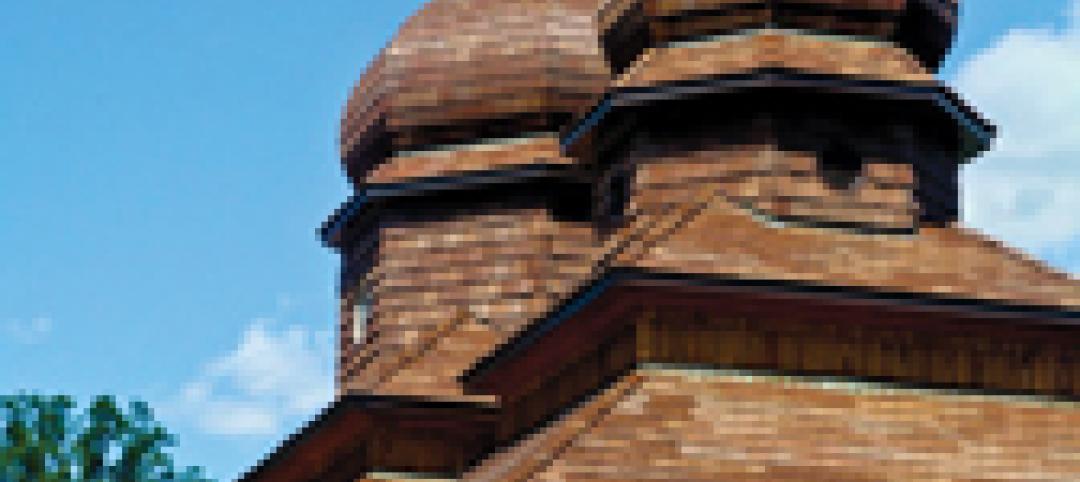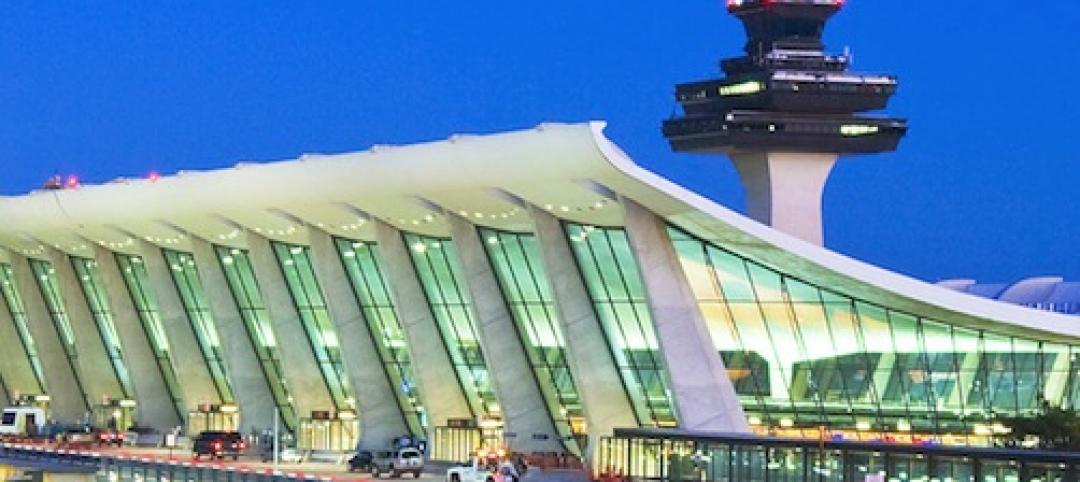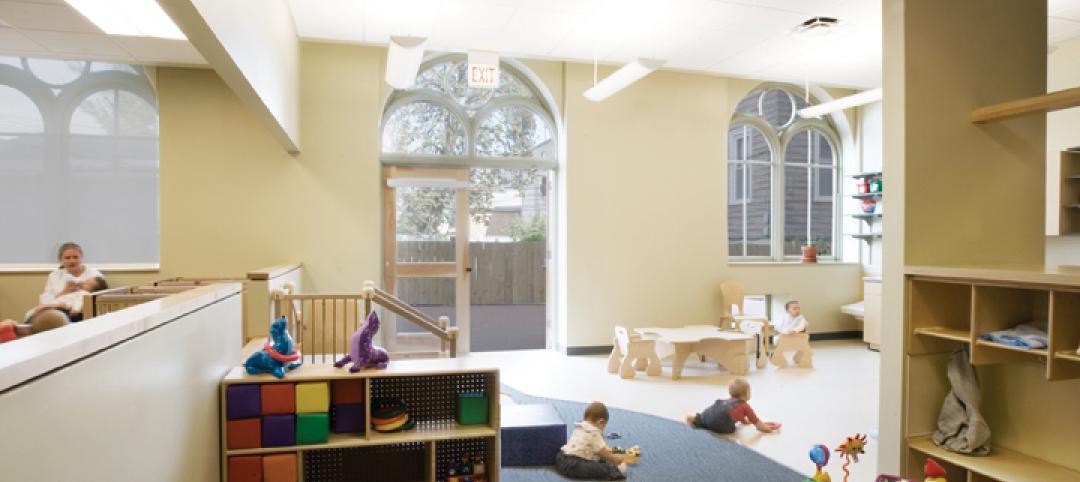Maverick Builders, of Grove City, Ohio, has built numerous churches over the years, some of them metal building systems. In recent times, their business has expanded to include houses of worship for a variety of religions. In 2012, they completed their first temple of Sri Saibaba, a sect related to the Hindu religion, with its origins in 19th century India. There are active devotees in many countries, including the US. In 2000, the Sri Saibaba Temple Society of Central Ohio was founded with its primary goal being the construction of a temple in Lewis Center, OH. It took a decade, but they achieved that goal. Design began in 2010, construction began in 2011, and the temple was completed by April 2012. The temple now regularly welcomes 400 worshippers.
Despite Maverick’s extensive experience in the religious sector, this project posed a few unfamiliar challenges. Some of the challenges related to specific religious requirements of the building, which impacted both design and construction. There were also structural aspects that were uncommon for metal building systems that had to be solved.
The 16,000-sf temple, in the wooded suburbs north of Columbus, OH, utilized a Star Building System. Although it does not look it, it is a single-slope roof structure. Parapet wall extensions of various heights create interest and depth to the exterior elevations. The walls are metal wall panels covered with a multi-colored EIFS finish with special accent features. The overall effect is more like a traditional stone-column structure with brightly colored plaster infill walls. A membrane rubber roof was installed over structural metal decking, supported by the Star structure.
The temple is a two-story building, with a basement level that rises 4 feet above grade. The second level is on a suspended precast concrete floor. This is an atypical condition, as many metal building systems are built as slab-on-grade. Engineering to properly transfer the roof and wall loads to the foundation is a little trickier than normal, and was made more complicated by significant point loads of large ornamental structures at several locations on the roof.
There were a number of unusual design features. Maverick Builders’ owner, Paul McKnight, recalls that some of the interior spaces weren’t located where they would be if designed from a purely architectural standpoint. The beliefs of the congregation required specific compass-orientations for certain rooms. The temple sanctuary had to be oriented correctly, as did the direction of staircase travel, and even the bathroom layout. Both interior and exterior designs feature walkways that circle the building and main prayer hall, which are used as part of the religious ceremonies.
The roof bears several heavy ornamental elements, each of which requires a roof curb and appropriate engineering for the increased load. The clear span pre-engineered rafters were designed to support seven point loads. The largest of these is the 2-ton shikhara, the pyramid-like structure that is the most prominent exterior feature of a Hindu temple. It is located directly over the focal point of the sanctuary.
In addition, the construction schedule needed to be coordinated with the owners so that appropriate blessings and religious rituals could be performed at certain stages of construction, such as when sacred objects were being installed. This sometimes involved dozens of people occupying the site while it was still under construction, a challenging and risky situation that contractors usually like to avoid. McKnight, however, recognized the importance of making these ceremonies possible, “to make sure that everything is blessed properly. It will bring good luck on everyone involved,” he says. “In today’s times, you need all the good luck you can get, so we happily cooperated with all of those requirements.”
There was one crucial phase of construction that could not be performed until the entire building was otherwise complete. The 4000 lb., Italian marble statue of Saibaba, the focal point of the sanctuary, was the last thing to be placed in the building. In order to accomplish this, Maverick had to build a framed opening into the roof directly over the intended location of the statue. It was temporarily sealed for weather tightness during construction. When everything else was complete, the roof was opened, and the statue was lowered in by crane. A domed ceiling was placed over the statue, the roof was permanently sealed, and the large shikhara was installed on the roof.
Maverick Builders was awarded a Master Builder Award for “Best Specialty Building,” presented at Star’s annual national sales meeting.
On the website of the Saibaba Temple Society of Central Ohio, there is a page devoted to construction updates, where it says, “It is often told that being able to participate and contribute in a noble activity like building a temple that will serve several thousand people year after year is a once in a lifetime opportunity.” It appears this may not be true for Maverick Builders, however. Word of the great success of this project has apparently gotten around to other congregations, and there may be more temples and more such opportunities in Maverick’s future.
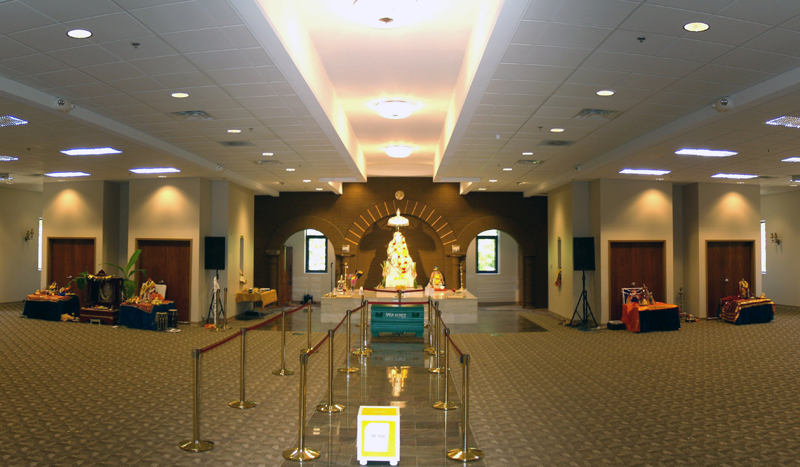
Project: Sri Saibaba Temple, Lewis Center, Ohio
Design/Builder – Maverick Builders, Inc., Grove City Ohio
Architect – CDI, Design, LLC, (Maverick’s in-house designer)
Building manufacturer – Star Building Systems
Steel erection – Maverick Builders
HVAC – Command Heating
Plumbing – Command Plumbing
Electric – Westlake Electric
Concrete – Eagle Concrete
Framing & drywall – Fry Drywall
Painting – Listing Painting
EIFS – Damron Finish Systems
Roofing – Harmac Roofing
Related Stories
| Jun 5, 2013
USGBC: Free LEED certification for projects in new markets
In an effort to accelerate sustainable development around the world, the U.S. Green Building Council is offering free LEED certification to the first projects to certify in the 112 countries where LEED has yet to take root.
| Jun 3, 2013
Construction spending inches upward in April
The U.S. Census Bureau of the Department of Commerce announced today that construction spending during April 2013 was estimated at a seasonally adjusted annual rate of $860.8 billion, 0.4 percent above the revised March estimate of $857.7 billion.
| May 21, 2013
7 tile trends for 2013: Touch-sensitive glazes, metallic tones among top styles
Tile of Spain consultant and ceramic tile expert Ryan Fasan presented his "What's Trending in Tile" roundup at the Coverings 2013 show in Atlanta earlier this month. Here's an overview of Fasan's emerging tile trends for 2013.
| Apr 30, 2013
Tips for designing with fire rated glass - AIA/CES course
Kate Steel of Steel Consulting Services offers tips and advice for choosing the correct code-compliant glazing product for every fire-rated application. This BD+C University class is worth 1.0 AIA LU/HSW.
| Apr 24, 2013
Los Angeles may add cool roofs to its building code
Los Angeles Mayor Antonio Villaraigosa wants cool roofs added to the city’s building code. He is also asking the Department of Water and Power (LADWP) to create incentives that make it financially attractive for homeowners to install cool roofs.
| Apr 19, 2013
Must see: Shell of gutted church on stilts, 40 feet off the ground
Construction crews are going to extremes to save the ornate brick façade of the Provo (Utah) Tabernacle temple, which was ravaged by a fire in December 2010.
| Mar 29, 2013
PBS broadcast to highlight '10 Buildings That Changed America'
WTTW Chicago, in partnership with the Society of Architectural Historians, has produced "10 Builidngs That Changed America," a TV show set to air May 12 on PBS.
| Feb 5, 2013
8 eye-popping wood building projects
From 100-foot roof spans to novel reclaimed wood installations, the winners of the 2013 National Wood Design Awards push the envelope in wood design.
| Jan 3, 2013
Answered prayers
A bold renovation enables a small church to expand its mission on a grand scale.
| Jun 1, 2012
New BD+C University Course on Insulated Metal Panels available
By completing this course, you earn 1.0 HSW/SD AIA Learning Units.


